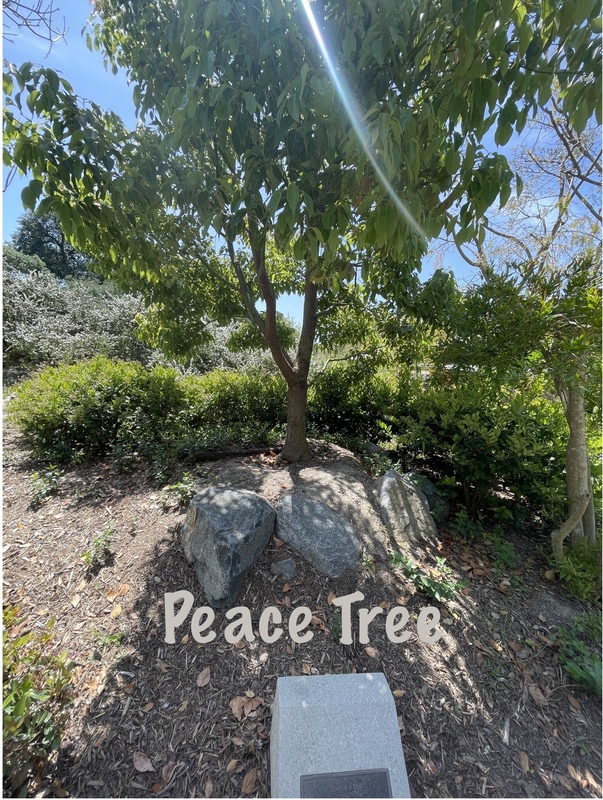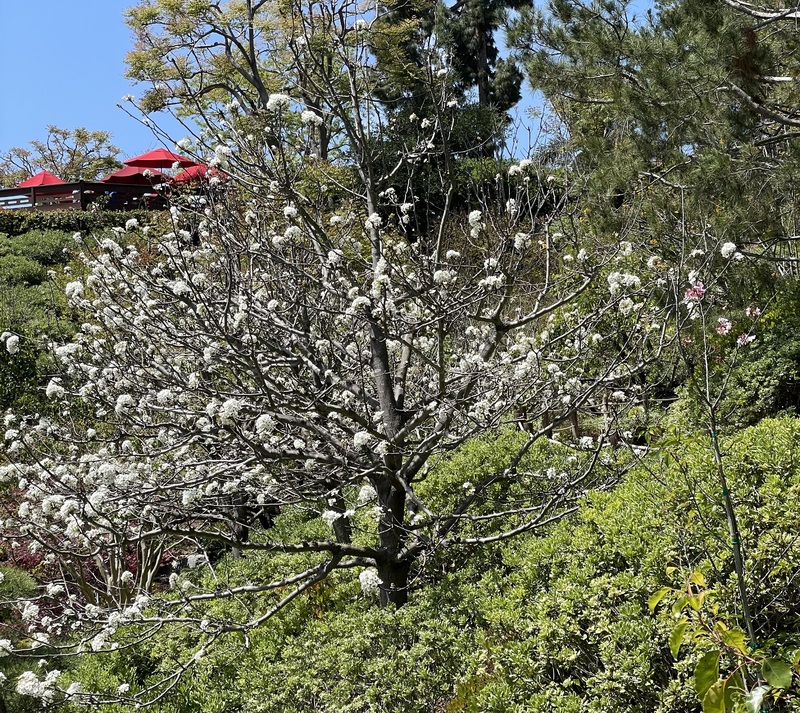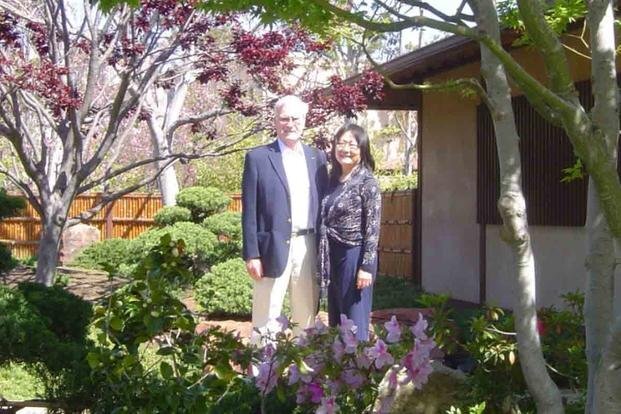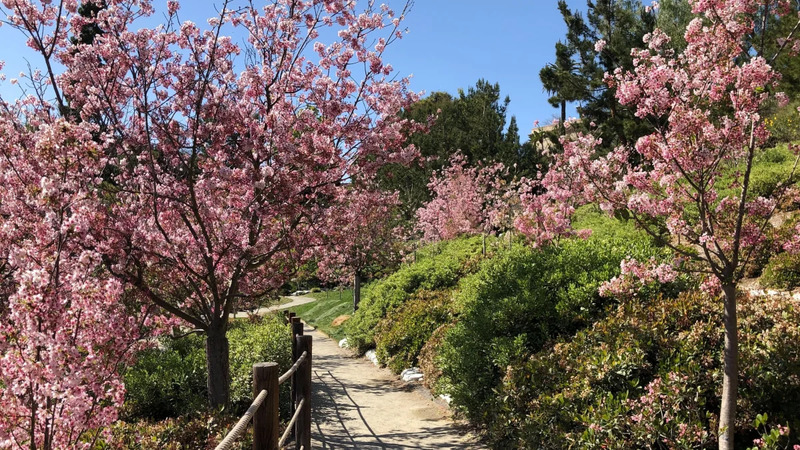San Diego - Yokohama Sister City
The Japanese Friendship Garden (JFG) is named San-Kie-En meaning "Three Scene Garden: Water Pastoral and Mountain." Our garden shares its name and is named after the San Kie Garden in Yokohama. JFG is an expression of the ties between the people of San Diego and its sister Yokohama and blends the two cultures together to create a unquie expreince (1)
The bronze lantern called yuikidro has a typical broad roof of the snow lantern. It was a gift from the Boy Scouts and the citizens of Yokohama as symbol of continued friendship between the two cities.(2) The chrome sphere inside the lantern contains the names of the people who helped to send the gift to San Diego and the pedestal has an inscription written by Hidenobu Takahide, Mayor of Yokohama (3)
A stone lantern was presented to the city of San Diego in 1963 but it was weathered by wind and rain so the Boy Scouts and citizens of Yokohama decided to present the city of San Diego, with a new bronze lantern. The current lantern was created commissioned by the city to the best Japanese foundry, techniques which are the same as those used to produce Daibuisu (the giant Buddha Statue) in Kamakura that has withstood the weather for over seven centuries (3). "It has been over 40 years since the two cities established thier sites city friendship. We hope that this Light of Friendship wil always shine in your city and it's people and that it will be a light for future friendship between our two cities (3)."
The Peace Tree or Camphor Tree were donated to the Japanese Friendship Garden in August of 2015. JFG garden received 15 saplings grown from tree that survived the atomic bombing of Hiroshima in 1945.
"These trees were a gift from Green Legacy Hiroshima in imitative to establish and distribute the saplings of A-bomb trees throughout the world to promote message of life, hope and peace (4)."
These trees are a wonderful representation of the these two sister cities and the bond that is displayed throughout the garden. Bond of frienship and peace that has affected many generations.
On July 12, 1951, off the east coast of North Korea the USS Walke was severely damaged when it hit a mine. In the process of it getting hit 26 men were killed and 40 were injured during the event (5). The ships commanding officer, Marshall Thompson prevented the ship from sinking and conducted a rescue operations to save his crew. Thompson was able guide the USS Walke to Sasebo, Japan where they would work to patch up the holes in the ship. In Sasebo, the crew would meet a young 14 year old orphan girl named Mitoko (6). Mitoko was what Japanese called an "atomic bomb orphan," a term for those whose parents were killed by the atomic bomb in Nagasaki and its after affects (5).
On July 1951, the USS Walke was finally able to finish the repairs, and set sail to Mare Island, California to fix the rest of the damages. But before leaving Japan Thompson and his crew set up a bank account with a scholarship fund for Mitoko (5). The crew and Commander Thompson lost contact with Mitoko after the war. Thompson retired as a captain would later learn that Mitoko would try to reach out by sending letters but had the wrong address and her letters would always return (5).
In the 90s Thompson attended a tea ceremony at the Japanese Friendship Garden in San Diego's Balboa Park, and would mention the story of Mitoko to the staff. Mrs. O'Hara one of staff members at the tea ceremony, was able to locate and contact Mitoko. By this time Mitoko was a sucessful nurse working for the Red Cross, and she was now married with a son and daughter (6). Fast forward to August 1993, after 42 years Mitoko was able to reunite at the Japanese Friendship Garden with Captain Thompson and several of the USS Walke crew (5). Mitoko and her husband returned several times to San Diego for reunions, for Captain Thompson's funeral and for the 50th anniversary mememorial service of the Walke incident in 2001 (6)
Captain Thompson commented on his connection to Mitoko, "We did not help Mitoko by paying for her scholarship. In fact, she is the one who helped us. She had been orphaned and yet, she was always there to cheer up dispiritated officer with a smile and her unstoppable optimism" (6) .
Cherry blossoms are part of a larger narrative, which is the story of friendship that this garden represents. Mitoko ended up writing a book on her lifer and her connection to the Walke. In her book she mentions that the cherry trees in the Japanese Friendship Garden were made possible by a donation she made. In her book Mitoko mentions, how these cherry trees are symbols of a long lasting friendship between the Japanese and the American people, and her bond between herself and the USS Walke crew (6).
Since 2005, 'Cherry Blossom Week' has been celebrated in the garden. Sakura, or cherry blossoms, are viewed by friends and family, who can also enjoy performances, drumming, and dancing. There is also a performance of Japanese street theatre, Kamishibai, which combines story-telling with hand-drawn visuals and live narration. [Gusman, Union Tribune]
Works Citied
(1) Japanese Friendship Garden Pamphelt, "Japanese Friendship Garden San Diego: Our Mission," (San Diego: Japanese Friendship Garden 2023).
(2) Japanese Friendship Garden San Diego Pamphelt, "Japanese Friendship Garden San Diego: Upper Garden Features," (San Diego: Japanese Friendship Garden 2023).
(3) Light of Friendship Lantern plaque, "History of the light of Friendship" December 1997, Japanese Friendship Garden, San Diego, CA.
(4) Peace Tree plaque, "Peace Tree," 2015, Japanese Friendship Garden San Diego, CA.
(5) Richard Sisk, "The Navy's Deadliest Day of the Korean War, and the 'Atomic Bomb Orphan' Who Would Change the Crew," Miltary.com, April 6, 2022, https://www.military.com.
(6)"A Story of Friendship," Japanese Friendship Garden, https://www.niwa.org/a-story-of-friendship.











